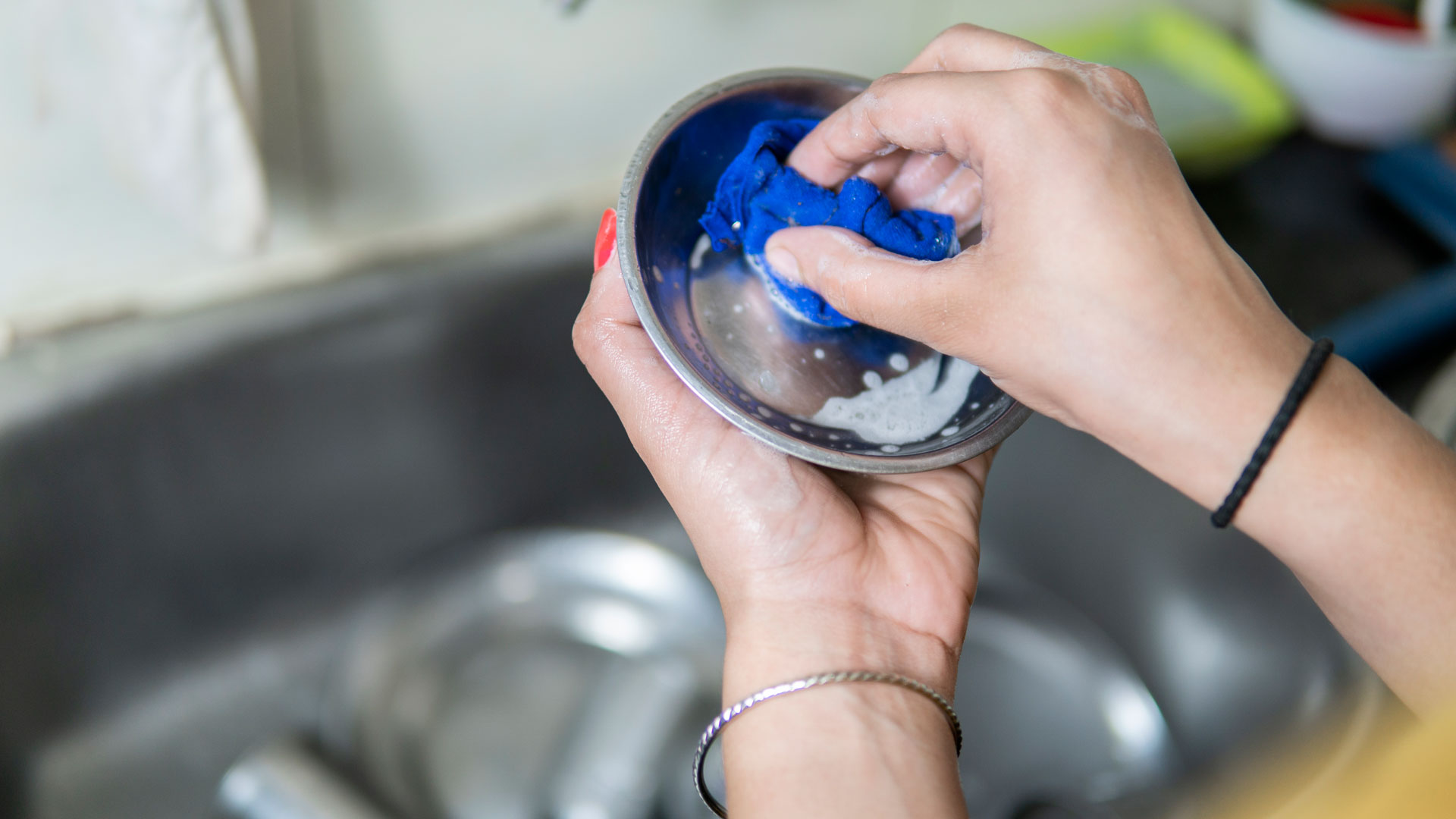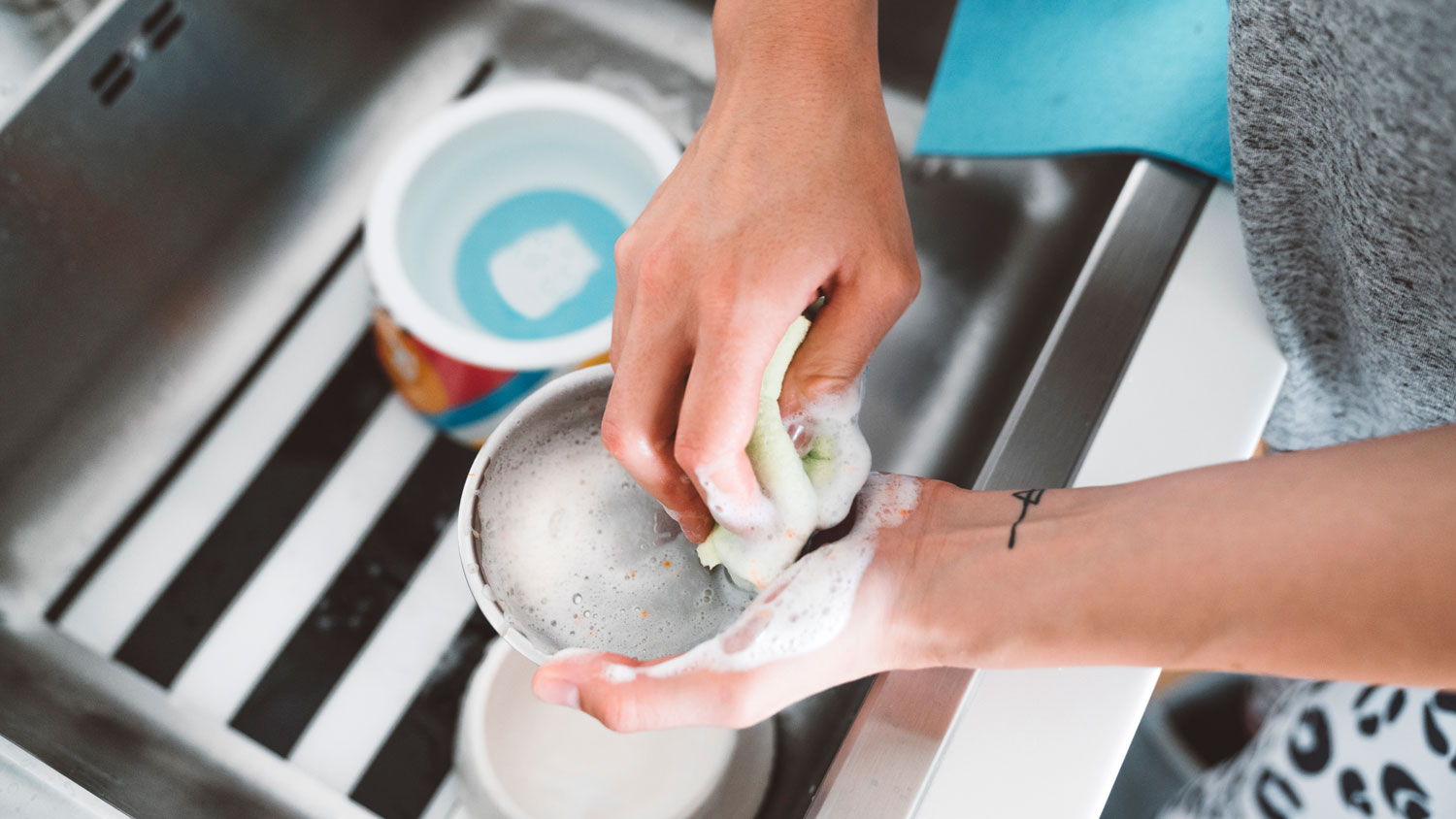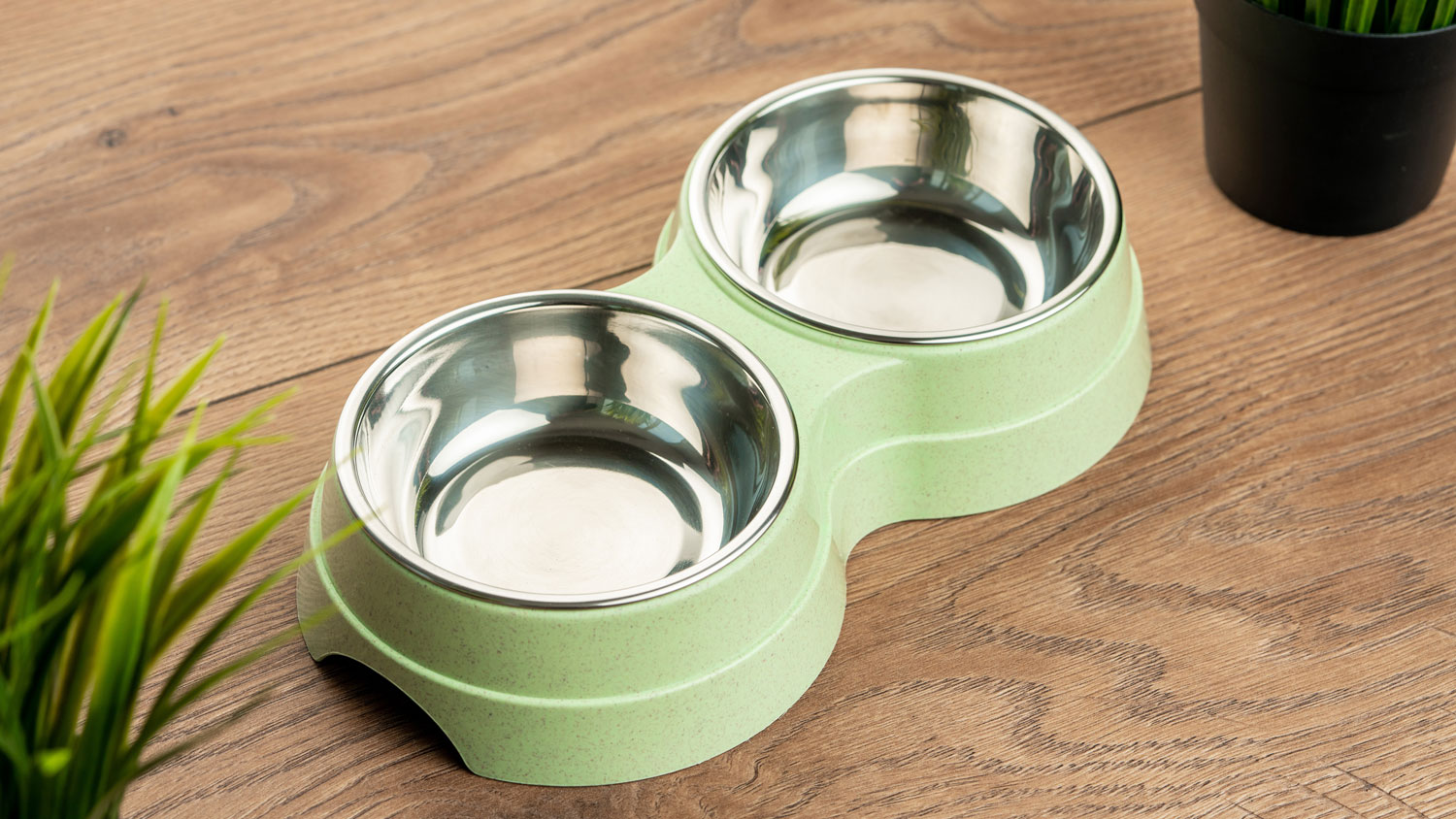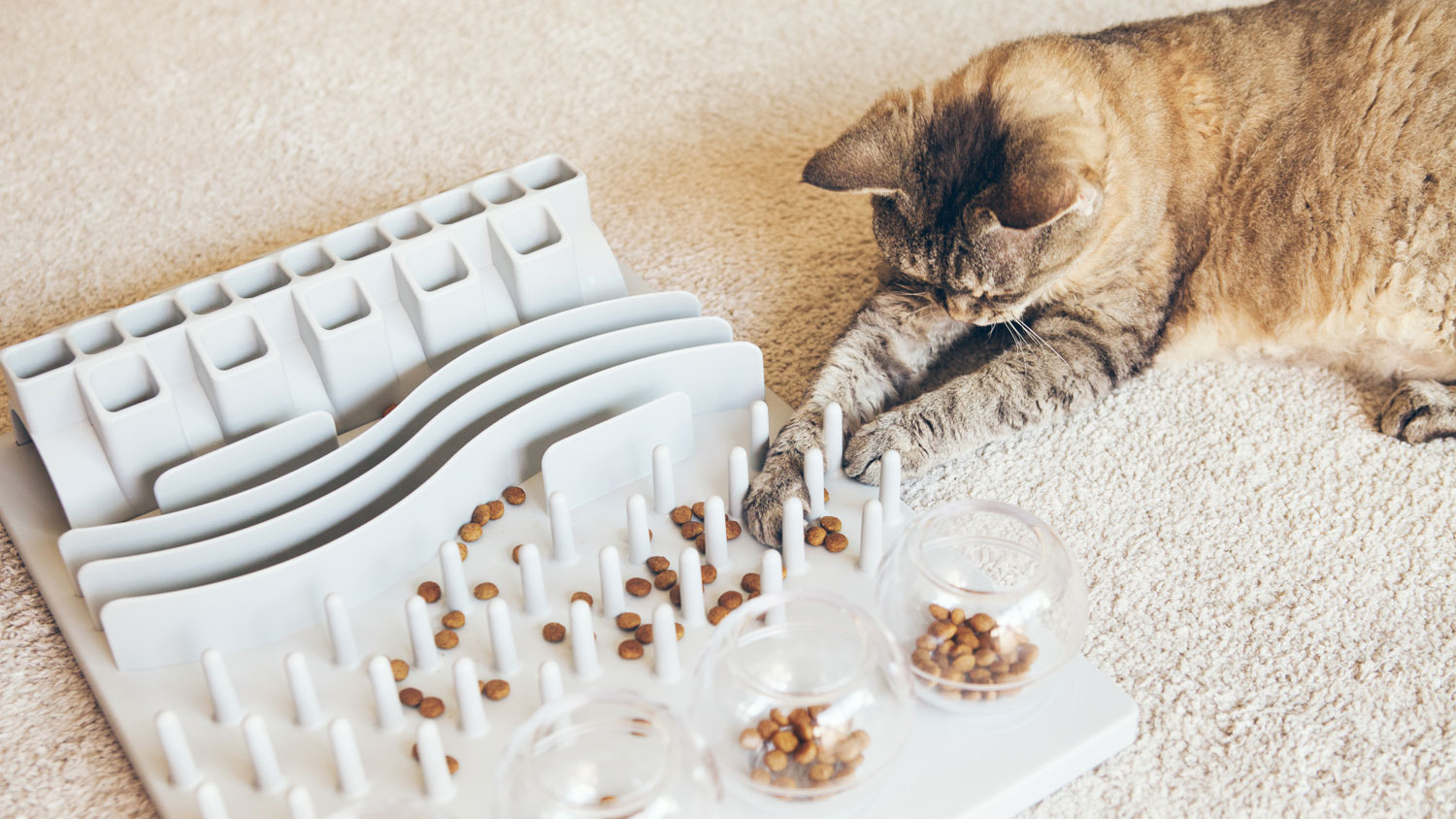How to clean your cat's water bowl and food dishes
Everything you need to know about how to clean your cat's water bowl and food dishes

Knowing how to clean your cat's water bowl and food dishes is a great way not only to ensure a happier pet at mealtimes, but also to safeguard it from tummy upsets or worse.
Given the sort of thing your cat might consume while it's out and about – such as small rodents, and lapping water out of filthy puddles – you might question the need to give it a sparkling clean food bowl for every meal; surely a quick rinse and a wipe with kitchen paper will do the job just fine?
But if you've ever treated kitty to the best cat food, only for them to saunter off with a dismissive flick of the tail, it might be that it's just being a typical cat, or it could be that its food bowl just isn't up to scratch in terms of cleanliness.
While a cat's sense of smell pales in comparison to a dog's, it's still about 20 times more sensitive than ours, and what might seem like an adequately clean dish to you could well smell a lot less inviting to your furry pal.
This guide will tell you everything you need to know about getting those bowls and dishes good and clean; if you have any other mealtime-related questions, we also have advice on what kind of bowl is best for cats, and after looking at that you should check out our guide to the best cat food bowl.
Can a dirty food or water bowl make a cat sick?
In short, yes. Pet bowls can be a breeding ground for germs and bacteria if they're not washed often enough. Not only is leftover cat food a great source of unpleasant bacteria, your cat's food dish or water bowl is also like to collect all manner of microbes from its mouth, and as we should all know by now, the inside of your cat's mouth can be a pretty toxic place, which is why cat bites can get horribly infected so quickly.
On top of all that there's biofilm, which is the slimy residue you might feel in your cat's bowl when it's finished eating. It's an unpleasant combination of bacteria from old food, and your cat's saliva. It smells bad and it can make your cat sick, and it's the most likely reason why your cat doesn't want to know about the delicious meal you've just put in front of it.
Get the best advice, tips and top tech for your beloved Pets
Cutting to the chase, unsanitary food bowls can make your cat unwell in all manner of ways. Diarrhea and vomiting will be the most immediately obvious results, (although if your cat's often sick after eating you could try one of the best anti-vomit cat bowls to see if that helps), as well as lethargy, fever and loss of appetite, and infections from a dirty bowl could lead to more serious conditions.

How often should I clean my cat's bowls?
Ideally you should be feeding your cat out of clean dishes every mealtime, as recommended by the FDA, but at the very least you should give your cat a clean food dish every day.
As for water bowls, the ideal is that you change its water and refresh its bowl every day, but there's a bit of leeway on this and taking care of it every two days should be fine. If you're wondering how to stop a cat from spilling their water bowl, it may be that the water isn't fresh enough for their liking, and that means changing their water and cleaning the bowl more often.
How to clean your cat's bowls
Regardless of whether you feed your cat from stainless steel bowls (which you should, because they're the least likely to get gunked up with bacterial nasties), ceramic bowls or plastic bowls, you can clean them all in the same way.
That said, if you're using ceramic or plastic bowls, you should be aware that chips and cracks in ceramic, or scratches in plastic, make great breeding grounds for harmful bacteria, so you should take extra care when washing them (or preferably ditch them for stainless steel).

Washing your cat's bowls in a dishwasher
If you have a dishwasher then you can put your cat's bowls in there; give them a quick hand-wash first to remove bits of old food, put the dishwasher on the highest setting and when it's done they'll be ready for kitty's next meal. Easy!
Washing your cat's bowls by hand
There's nothing complicated about washing your cat's bowls by hand; here's what you need to know.
1. Can you wash cat bowls with Fairy Liquid?
Absolutely! Whatever washing-up liquid you normally use for washing your dishes will be just fine for your cat's bowls.
2. Wash your human dishes first
While there's minimal risk to you from washing your cat's bowls with your own dishes, it pays to stay on the safe side. Do your dishes first, then put the cat's bowls in the sink for their turn.
3. Use hot, soapy water
For optimum cleanliness you of course need washing-up liquid, but you should also make sure that the water's good and hot in order to take care of any lurking bacteria. You'll want to put on a pair of rubber gloves, not only to protect yourself from the hot water, but also from any revolting germs in those bowls.
4. Give the bowls a bit of a soak
If your cat's bowls have been left a bit too long before washing, they'll need a bit of time to soak before you start cleaning them, in order to soften up any dried cat food residue.

5. Use a sponge or dishcloth
Even if your cat's bowls are in a bit of a state, don't reach for a scourer; that can scratch the bowls, and those scratches can be a great breeding place for germs. Instead use a sponge (any sort will do) or dishcloth, and make sure to use a different one than the one for doing human dishes. Give them a good old vigorous scrub, watching out for any caked-on muck.
6. Don't forget to rinse
Your cat's bowls should be beautifully clean by now, but whatever you do, don't forget to give them a good rinse before putting them on the draining board. They might still have residue of washing-up liquid all over them, which your cat could well smell come feeding time, and that might be just as off-putting as a dirty bowl.
7. Drying time
You can either let your cat's lovely clean bowls air-dry, or if you're in a hurry you can instead dry them with a towel; just make sure you use a separate towel for your cat's bowls rather than the one you use for your own dishes.
What about specialist cat bowls?

If you've treated your cat to one of the best smart pet bowls or maybe the best slow feeder cat bowl and you're worried it might be trickier to clean, don't be. With most smart bowls, the bowl itself is removable so you can wash it as normal.
However when it comes slow feeder bowls and puzzle feeders, you'll need to take a bit more care when washing them as they're generally split into lots of little sections where germs can hide, so make sure you get into all those nooks and crannies, and rinse well afterwards!
How do you disinfect a cat bowl?
If it's been a while since you gave your cat's bowls a good wash (come on, we've all been there), you might want to go that extra step and disinfect them. Luckily that's easy and won't take long, and you can do it with ordinary bleach.
You'll want a solution of one part bleach to ten parts hot water; put your cat bowls into that (remembering to wear rubber gloves) and let them soak for ten minutes or so. When they're done, tip the bleach solution down the plug hole, and give the bowls a really good rinse to get rid of all races of bleach, then let them air-dry. Et voilà! Super sanitary cat bowls!
Summary
Look, maybe you haven't been as attentive as you might have been when it comes to keeping your cat's bowls good and clean, and perhaps you haven't quite appreciated the benefits of keeping your furball supplied with clean dishes (or indeed the dangers of feeding it from grubby bowls).
But keeping your cat's bowls clean doesn't take long or require any special effort, and the end result will be a happier, healthier cat. So set aside a special sponge and towel for those bowls, and get into a new feeding time routine; kitty will definitely thank you for it (that's a lie; it's a cat, after all). Happy scrubbing!
Jim is a writer, performer and cat-wrangler based in Bath, who last year adopted a pair of sibling rescue cats who turned out to be effectively feral, and has spent a lot of time since then trying to get them accustomed to people (some success) and each other (ongoing project).

